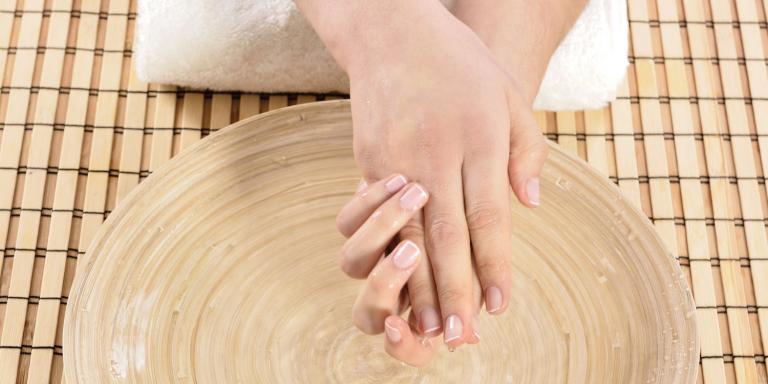Your hands have a rough go of it. With dehydration caused by chilling winds and frigid outdoor air combined with artificially warmed indoor air, it’s no wonder they can get dry and cracked, and look like they’ve aged 10 years as soon as winter rolls around. Here are some tips to turn back the hands of time.
Glove love
As soon as the thermometer drops to 40 degrees outside, it’s time to wear your favorite gloves or mittens to help retain moisture in your skin. Inside, be sure to wear protective gloves when doing chores.
Clean and moisturize
Frequent exposure to warm water and soap dries the skin on your hands. Use a gentle soap; look for a product without irritating sodium laurel sulfate. Opt instead for olive oil soap, or a cleanser containing calendula.
Keep a bottle of hand moisturizer at every sink and in your purse to nourish hands after washing. Look for skin-loving ingredients such as sea buckthorn, soothing allantoin and chamomile, strengthening collagen, and moisturizing shea butter.
Polish
To remove dull, dry skin, be sure to exfoliate the backs of your hands regularly. Look for mildly abrasive products containing oatmeal or sea salt. You can also use a loofah or wash cloth as a gentle means of removing dead skin. Safe and natural chemical exfoliants include lactic, glycolic, or malic acids.
Indulge
At least once a week before bed, rub rich coconut oil on your hands, pull on a pair of cotton gloves, and treat your hands to some healing TLC as you get your beauty sleep.
Natural manicure
Give your fingernails a well-deserved 10-minute soak. Weak nails will benefit from soaking in warm water with horsetail or rosemary essential oil. Soak in evening primrose or calendula if you need to soften nails, and myrrh will help to prevent breakage. Gently push back cuticles with an orange stick: Do not cut cuticles, as this can lead to infection. Dry nails with cotton cloth.
File your nails in one direction to the shape you prefer. If your cuticle is oval shaped, go with an oval-shaped nail tip. Squared cuticles look best with squared tips. Nails start to break easily when they are longer than a quarter-inch past the fingertip. Use a buffer to shine the tops of nails on your fingers and toes. You'll be amazed at the glow you can achieve without polish!
Hangnails
Dehydrated cuticles cause tiny pieces of skin to break near the side of your nail and, because they’re attached to living skin, can be painful if they catch on fabric. For prevention, keep cuticles properly moisturized by massaging them nightly with jojoba or vitamin E oil. Avoid biting or picking hangnails, as this can lead to tearing and infection. Instead, use nail scissors to snip off dead skin, being careful not to cut too close.
Nail infections
If your hands are frequently immersed in water, you are susceptible to a fungal infection called paronychia. Aggressive nail biters are also at risk. Often a warm-water soak with tea tree oil will help; otherwise, see your healthcare provider. An untreated infection can lead to loss of your nail.

